Igor Minar & Natalia Venditto
Web-Fragments: incremental micro-frontends migration approach for enterprise
#1about 3 minutes
Challenges of modernizing and scaling monolithic frontends
Large monolithic applications become outdated and difficult to scale, a problem backend teams solved with microservices and virtualization.
#2about 2 minutes
Introducing Web Fragments for frontend virtualization
Web Fragments provide the missing virtualization layer for micro-frontends, enabling true isolation and incremental migration of monoliths.
#3about 2 minutes
Avoiding fate sharing with isolated micro-frontends
True micro-frontend independence requires avoiding fate sharing, where one team's error can bring down the entire application.
#4about 3 minutes
Demo of migrating a legacy e-commerce application
A client-side rendered React monolith is incrementally migrated by replacing its catalog and cart with server-side rendered fragments.
#5about 4 minutes
How Web Fragments achieve CSS and JavaScript isolation
Web Fragments use Shadow DOM for CSS encapsulation and a hidden "reframed iframe" to create isolated JavaScript execution contexts.
#6about 2 minutes
Improving performance with server-side rendered fragments
Server-side rendered fragments can be displayed and become interactive immediately, even while the legacy application shell is still loading.
#7about 2 minutes
Debugging isolated JavaScript contexts in dev tools
Browser developer tools can target each fragment's isolated JavaScript context, and removing a fragment from the DOM completely unloads its code and memory.
#8about 4 minutes
Overcoming iframe limitations for complex UI patterns
Unlike traditional iframes, Web Fragments can render UI like modal dialogs that break out of their original boundaries without sacrificing isolation.
#9about 1 minute
A summary of the Web Fragments migration workflow
The migration process involves rebuilding a component, deploying it to an endpoint, registering it in a middleware, and adding a custom HTML tag to the host application.
#10about 3 minutes
Comparing Web Fragments to iframes and Module Federation
Web Fragments offer the isolation of iframes without the UI/UX limitations and avoid the fate-sharing and tooling lock-in of Module Federation.
#11about 3 minutes
Project status, roadmap, and future web standards
The project is in production and the roadmap includes dependency reuse, with plans to adopt future web standards like Shadow Realms to replace custom implementations.
Related jobs
Jobs that call for the skills explored in this talk.
Matching moments
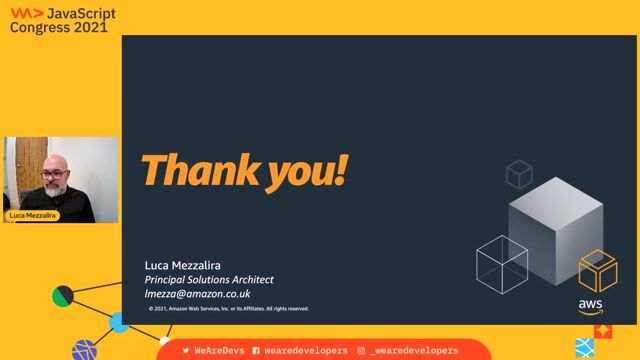
33:55 MIN
Audience Q&A on practical micro-frontend challenges
Micro-frontends anti-patterns

27:46 MIN
Combining micro frontends with an islands architecture
Multiple Ships to the Island - Micro Frontends & Island Architectures
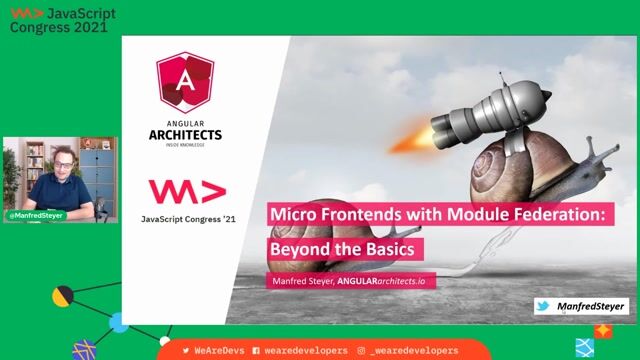
00:18 MIN
The role of micro-frontends in scaling development teams
Micro-Frontends with Module Federation: Beyond the Basics

26:34 MIN
Applying the strangler fig pattern to legacy apps
Interface Contracts in Microfrontend Architectures

00:11 MIN
Understanding the purpose and benefits of micro-frontends
Stairway to Heaven - Scaling Frontends the Right Way
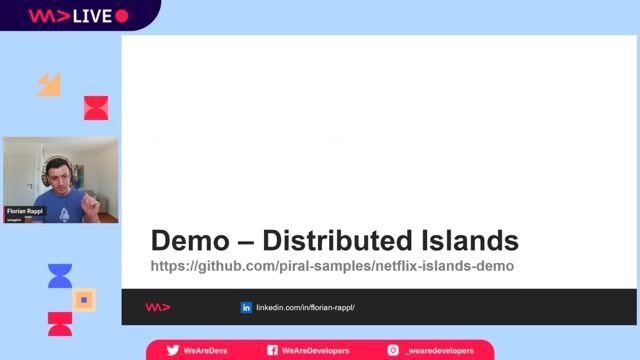
35:48 MIN
Demo of a server-rendered micro frontend application
Multiple Ships to the Island - Micro Frontends & Island Architectures
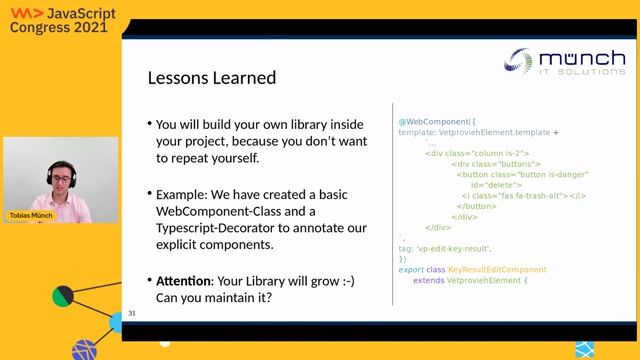
17:33 MIN
Using web components to migrate legacy applications
Frameworkless: How to use Web-Components in production?
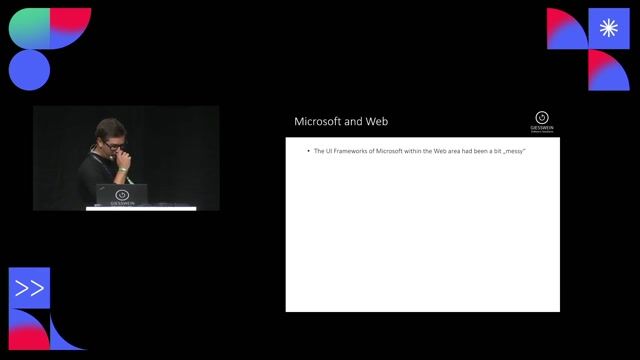
01:14 MIN
A brief history of Microsoft's fragmented web UI frameworks
Blazor – the new SPA Framework for everyone who hates JavaScript
Featured Partners
Related Videos
 59:03
59:03Multiple Ships to the Island - Micro Frontends & Island Architectures
Florian Rappl
 24:47
24:47Advanced Micro Frontends: Multi-Version and Multi-Framework Scenarios
Manfred Steyer
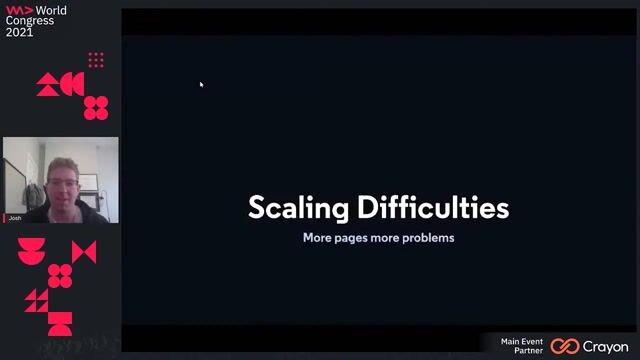 43:20
43:20Microfrontends at Scale
Josh Goldberg
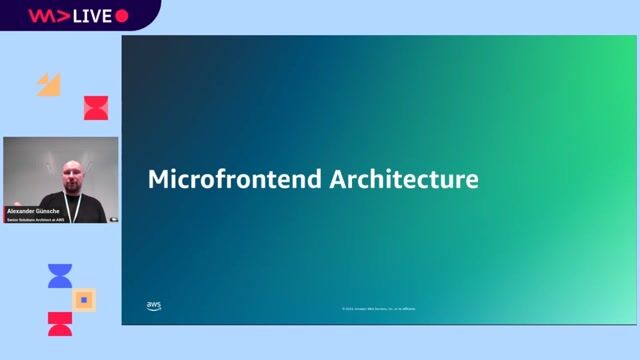 54:39
54:39Interface Contracts in Microfrontend Architectures
Alexander Günsche
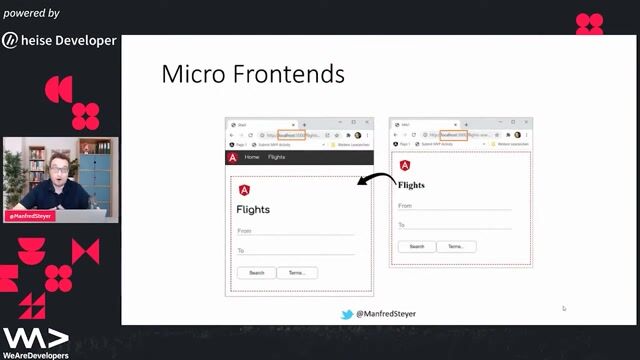 45:40
45:40Micro Frontends with Module Federation: Why and How?
Manfred Steyer
 35:17
35:17Front-End Micro Apps
Serg Hospodarets
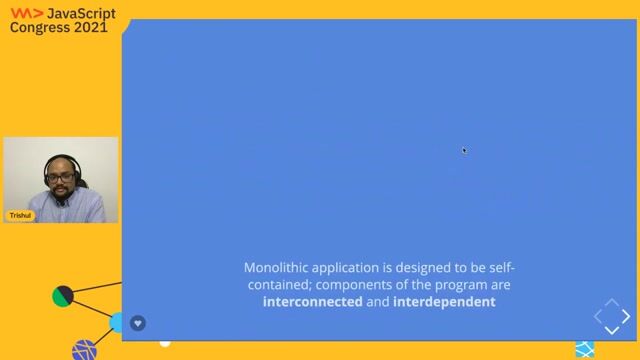 41:49
41:49Destructuring Frontend monoliths with MicroFrontends
Trishul Goel
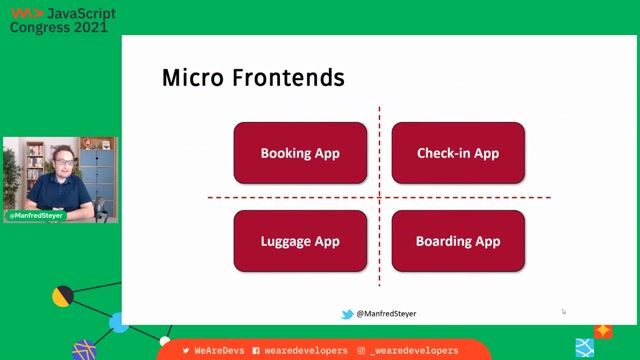 44:35
44:35Micro-Frontends with Module Federation: Beyond the Basics
Manfred Steyer
From learning to earning
Jobs that call for the skills explored in this talk.








